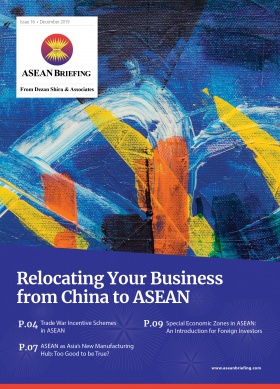Cambodia’s 2021 Minimum Wage: Increased for Textile and Garment Sectors
- As of January 1, 2021, Cambodia’s monthly minimum wage rate for regular workers is US$192, an increase from US$190 in 2020. The rate for probationary workers is set at US$187 per month.
- The minimum wage is only applicable to workers in the textile, garment, and footwear industries, which contribute to more than 80 percent of exports.
- This hike is the lowest since the minimum wage was unchanged between 2010 and 2013, with the government attributing this to the impact caused by the pandemic and the partial withdrawal of the EBA.
- Labor union leaders wanted an initial increase of US$12 while the employer’s association wanted a decrease of US$17.
Cambodia’s Ministry of Labor and Vocational Training (MLVT) issued Prakas No. 33 which stipulated that the country’s 2021 monthly minimum wage was set at US$192 for regular workers, an increase of US$2 from 2020. The new rate has been in effect from January 1, 2021.
For probationary workers, the monthly minimum wage is US$187, also in effect from January 1. Workers also receive other benefits, which include accommodation allowance at US$7 per month, attendance bonus of US$10 per month, and food allowance of US$0,5 per day. Moreover, there is an overtime and seniority bonus of between US$2 to US$11 for workers who have worked from the second to the eleventh year.The regulation also sets out the minimum wage for piece-rate workers — paid by the number of textile/garment/footwear pieces they complete.
The pay rate is determined by the number of productions, and if this results in a higher pay rate than the minimum wage — then the worker is entitled to the higher amount. If, however, the production brings in a lower pay rate than the minimum wage — then the employer must add to the workers’ pay to equal the minimum wage rate (US$187 for probationary workers and US$192 for regular workers).
Unlike other countries, Cambodia’s monthly minimum wage only applies to workers in the textile, garment, and footwear industries, which employ over 800,000 workers combined and contributes to 80 percent of total exports and 16 percent of total GDP.
Who sets the minimum wage?
The minimum wage is set in a Prakas (ministerial order) by the MLVT. The Act is issued after the MLVT has received recommendations from the National Council on Minimum Wage (NCMW), a tripartite body with equal representation from the labor unions, employer’s association, and the government.
The body conducts a scientific study on minimum wages and promotes dialogue between relevant stakeholders. When considering any possible increases in the minimum wage, the NCMW will evaluate the following criteria:
Basic needs of workers and their families;
- Cost of living;
- Inflation;
- Productivity;
- Competitiveness;
- Labor market; and
- Sector profitability.
A tough 2020
This year’s hike is the lowest since the minimum wage went unchanged between 2010 and 2013, mainly due to economic strains caused by the pandemic in addition to the partial withdrawal of the ‘Everything but Arms’ (EBA) status by the European Union in 2020.
Labor union leaders argued the increase was too small, demanding close to a US$12 increase, while the employer’s association wanted the monthly minimum wage reduced by US$17, to US$173. The government’s study showed the minimum wage should be US$186 before Prime Minister Hun Sen announced the new rate of US$192.
About Us
ASEAN Briefing is produced by Dezan Shira & Associates. The firm assists foreign investors throughout Asia and maintains offices throughout ASEAN, including in Singapore, Hanoi, Ho Chi Minh City and Jakarta. Please contact us at asia@dezshira.com or visit our website at www.dezshira.com
- Previous Article Vietnam Introduces New Labor Code for 2021
- Next Article The Philippines to Suspend Social Security and Healthcare Premium Hikes for 2021







